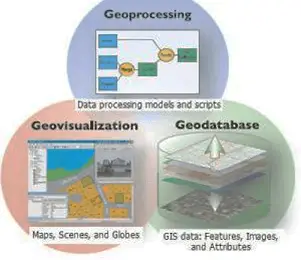What is GIS or Geographic Information System
A GIS or geographic information system integrates hardware, software, and data for capturing, managing, analyzing, and displaying all forms of geographically referenced information. A GIS helps you in answering question and solve problems by analysing the data provided and making it easier to understand and share. Geographic Information System is one of the latest and most advanced system till date to help organize spatial data.
It is an information system that is used to input, store, retrieve, manipulate, analyze and output geographically referenced data or geo-spatial data in various forms which gives relationships, patterns, and trends in different forms like maps, globes, reports, and charts. This helps planners to support decision-making for planning and management of land use and natural resources. It can also be considered as a computer-based mapping tool that allows users to manipulate large sets of data as layers or themes.
GIS technology is now being used widely as it can be integrated into any enterprise information system framework. A popular GIS software includes ArcGIS developed by ESRI. ArcGIS is widely used and taught to town planners to for urban planning.
How to add data in Geographic Information System
Modern softwares uses digital information generated by using other CAD tools by the process of digitization. Digitization is a process of making a digital map from a hard copy or image of map by tracing the actual map through lines and other tools in CAD softwares. The maps thus generated are generally used as maps called as base maps. The digitized maps are also georeferenced for better analysis.
GIS systems works by maintaining spatial and attribute data separately, then “joining” them for display or analysis for example, in ArcView, the Attributes of table is used to link a shapefile (spatial structure) with a data base table containing attribute information in order to display the attribute data spatially on a map.

Fundamentals includes:
Data Management: Database View
Manages various kinds of GIS data including vector, raster, images, tables, other data files
Analysis: Model View
Spatially aware data: Attribute and spatial query, Proximity and Overlay, etc
Visualization: Map View
Maps, Charts, graphs, tables, etc. Various coordinate systems – 2D and 3D
Functions of geographic information system:
- Capture Data
- Store Data
- Query data
- Analyze data
- Display Data
- Produce Output
Data Model: Implementation – Geographic Integration of Information
- Data is organized by layers, coverages or themes (synonymous concepts), with each layer representing a common feature.
- Layers are integrated using explicit location on the earth’s surface, thus geographic location is the organizing principle.

For more information about ArcGIS and more GIS softwares you can visit official website of ESRI by clicking here
Read about: Use of GIS Applications, GIS Softwares, Remote Sensing – Type & How it works, Bhuvan